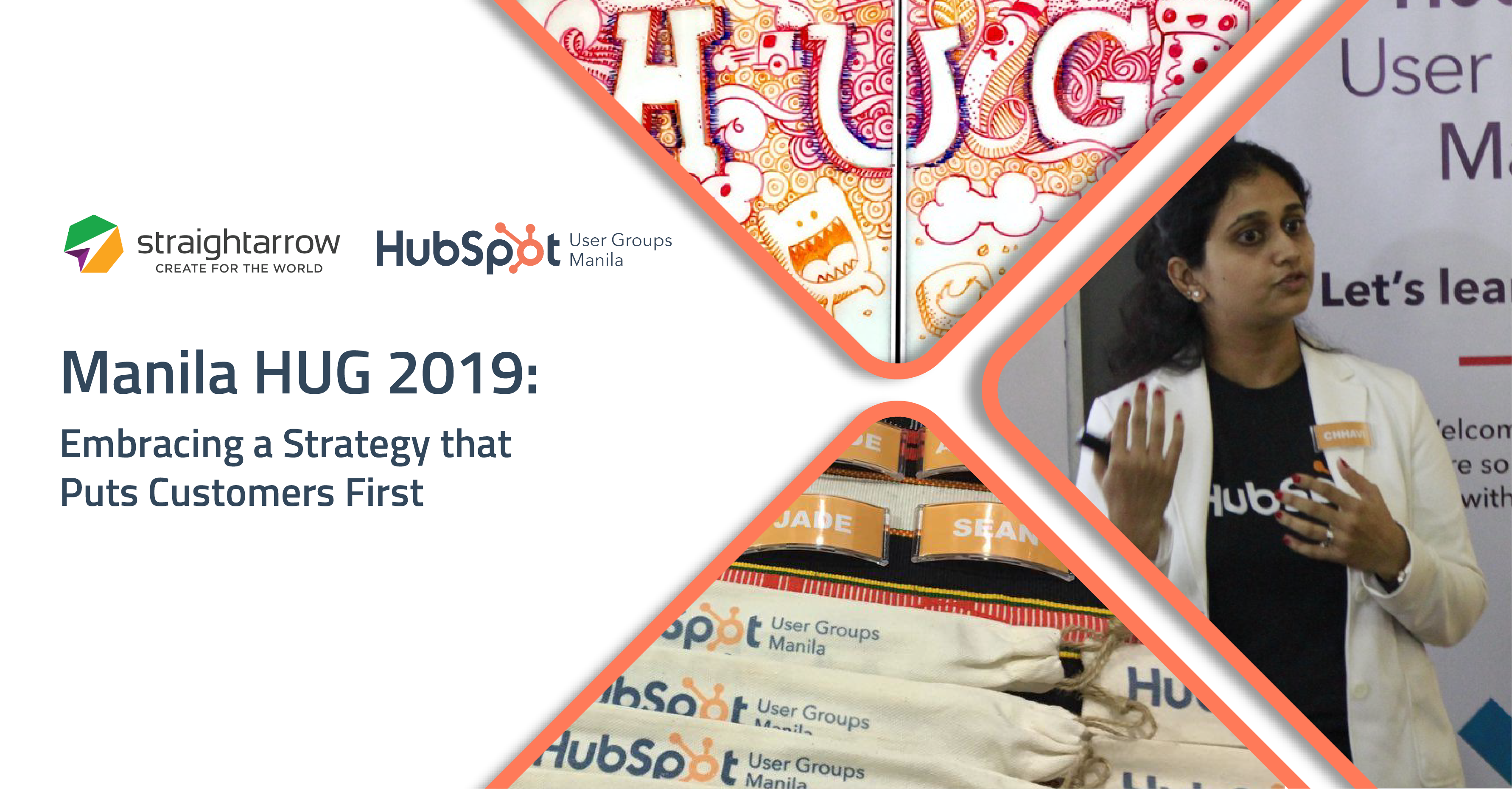
Prioritizing customers is an unwritten rule in business. Almost everyone knows that in order to support business success, you have to employ customer-first strategy. However, companies are falling behind when it comes to the application of this principle.
This realization is among the key takeaways of Filipino marketers who attended the first 2019 Manila HubSpot User Group (HUG) gathering held on May 21, 2019.
Hosted by StraightArrow Corporation and its sister companies, GetCre8tive Corporation and Creative Nation Academy, this is the second HUG event in the country following the first run 4 years ago.
Growing Better
HubSpot Singapore’s very own Inbound Marketing Consultant Chhavi Porwal graced the event to share her insights on growing better by introducing the new era of business where technology, and more importantly, consumers have changed.
Chhavi explained that technology has changed the way people interact, not just with friends and family, but with businesses.
This means that consumers are now able to engage with brands on a one-on-one basis and consume content in more ways than ever before. As a result, their expectations have also changed. They’re less patient and more skeptical.
Consumers now have higher demands, feel more empowered, and can often expect processes to be easy and simple.
They also trust word-of-mouth recommendations more than salespeople.
According to HubSpot research, 55% of consumers prefer referrals while only 22% rely on salespersons.
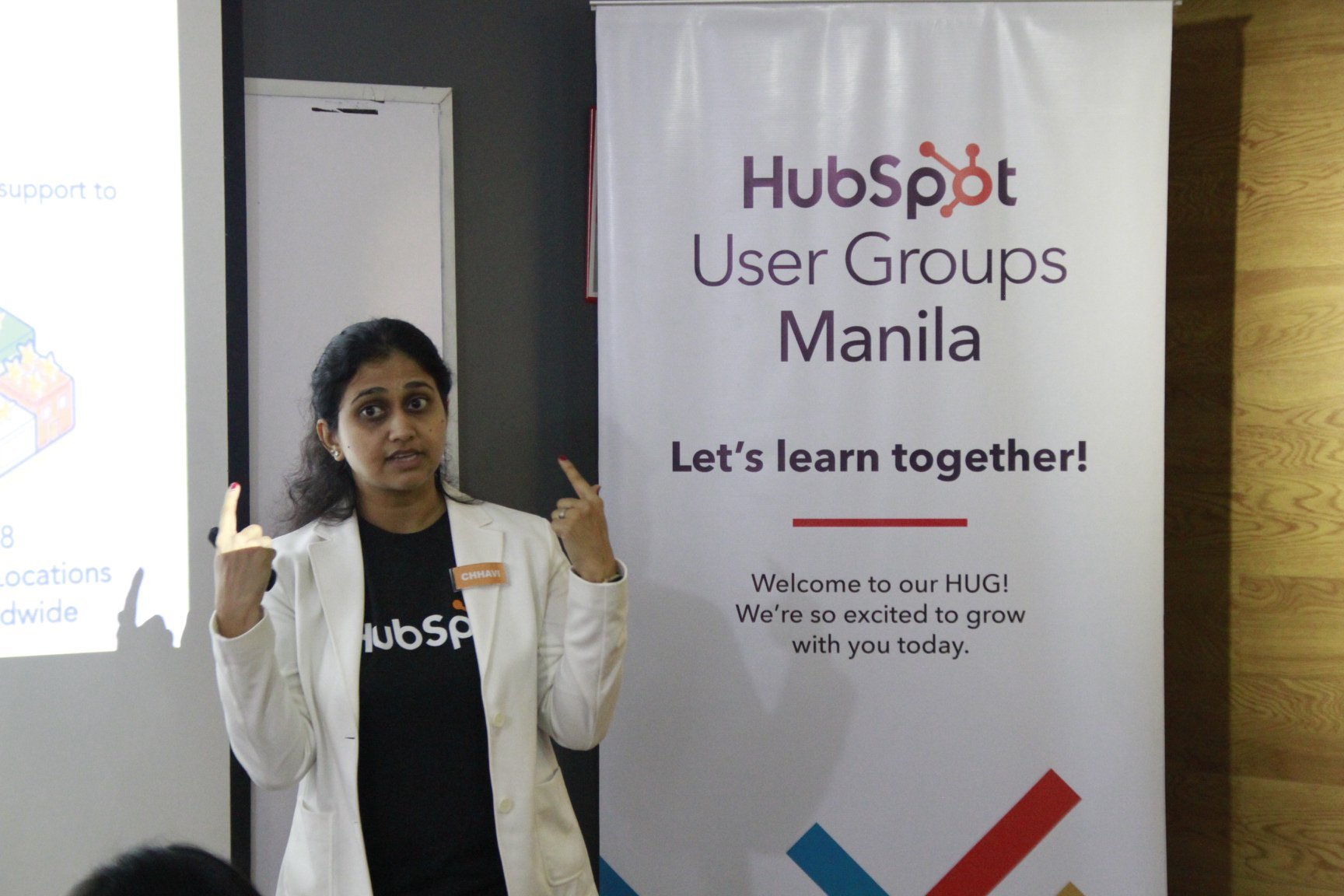
HubSpot’s Chhavi Porwal talks about growing better, the old funnel, and the flywheel. Photo by Mark Alarcon.
What does it mean for business?
Chhavi emphasized the need to “grow better” and to catch up on gathering referrals by focusing on delighting consumers. This prompted attendees to remember a common yet unpracticed lesson—prioritizing consumers and existing clients.
"[My key takeaway is on the] focus on clients, delighting clients because I really do agree that businesses are falling behind on it. We do know that we should prioritize clients, but our actions do not always reflect that," shared Jourdaine Bernardez, a freelancer and a consultant who attended the event.
Goodbye, Funnel! Hello, Flywheel!
The application of a customer-first strategy will entail saying goodbye to old practices, models, and processes that we’ve long believed to be foolproof. One such thing is the funnel.
If you’re a marketing or sales professional, you’ve most probably heard of the funnel and even structured your strategies following it. The funnel had worked for years, but it has one problem, especially now that the consumers are changing: it is linear and treats the customer as an endpoint.
Once you’ve got a client, you go back to the top of the funnel and find some more. While the funnel is effective in getting new customers, it doesn’t work in a customer-centric world where it’s important to consider how clients can help you grow your business or how they can become your brand promoters.
How then should we structure our strategies?
Recently, HubSpot introduced a new way to grow: the flywheel.
Fortunately for Filipino marketers, Chhavi gladly explained what it’s all about during the first 2019 HUG Manila event.
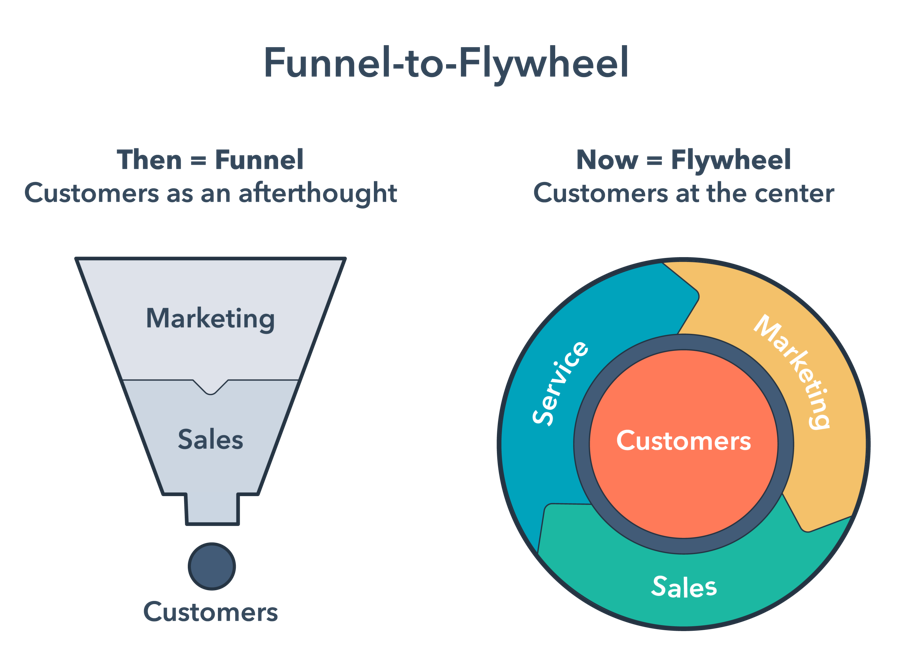
Photo from HubSpot.
Essentially, a flywheel is a machine that captures, stores, and releases energy. The amount of energy or momentum in the flywheel is dictated by how fast you spin it, the amount of friction, and its size.
The flywheel model simply means the customer is at the center and they are feeding growth, while marketing, sales, and service teams are aligning and working to minimize friction for them to gain momentum.
While the funnel loses its momentum at the bottom, the flywheel uses the energy stored at the center—the customers—to gain more momentum or clients.
With the flywheel model, the customer journey does not end after the first transaction—you can nurture them into promoters and leverage the power of word-of-mouth marketing.
Although this model is fairly new, Filipino marketers who attended the event welcomed the idea of structuring their processes using the flywheel.
Bernardez, a HUG attendee said, “it’s time to reinvent how we think about the process and the flywheel is one way of doing that, and I really liked it.”
Keeping the flywheel in motion
Of course, the discussion wouldn’t be complete without some practical tips on how to keep the flywheel spinning. HUG Manila members need to get started somewhere, and one of the ways to do that is through leveraging marketing automation.
Marketing automation is a term that has been around in the Philippine landscape for some time. However, there are marketers that are still unsure how its processes and execution work.
Fortunately, HUG Manila Leader and StraightArrow’s Digital Marketing Department Head, Chloe Villanueva, gladly explained the ins and outs of marketing automation.
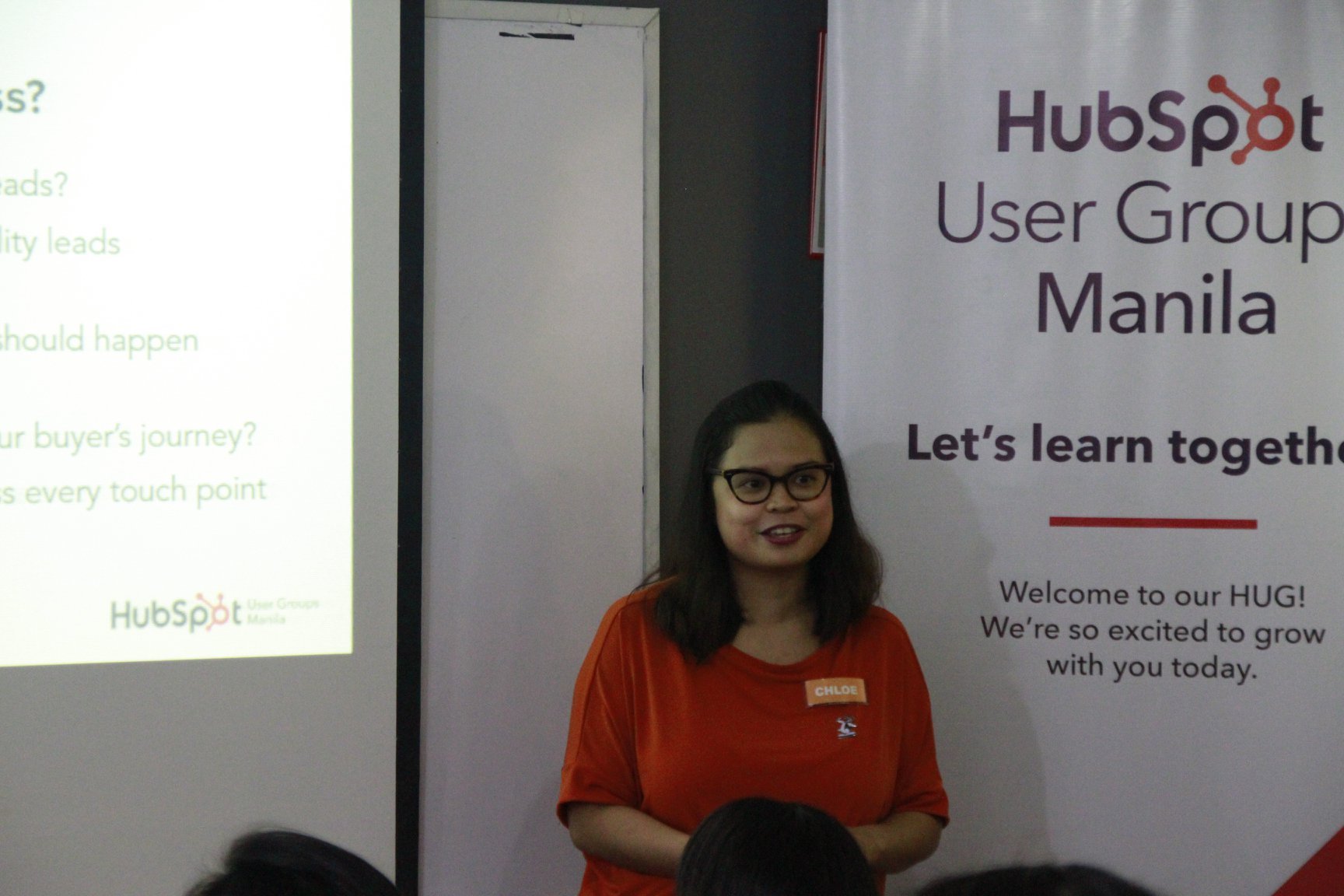
HUG Manila Leader and StraightArrow’s Digital Marketing Head, Chloe Villanueva talks about marketing automation. Photo by Mark Alarcon.
To start off, Chloe started by defining what marketing automation is.
Basically, the term marketing automation refers to a software platform that is used to program repetitive tasks such as email marketing, social media publishing, and more. It allows marketers to connect with customers through different points in their user journey while letting us focus on making more of the bigger decisions.
Through the use of automation, marketing, sales, and service teams come together to reach a common goal:
build relationships with clients before they’ve even bought in, to when they become customers, and until each time they return to make another purchase.
After explaining the definition and importance of marketing automation, Chloe proceeded to walk marketers through how they could create their own workflows—a basic requirement when automating tasks.
These workflows or predefined conditions trigger the completion of a specific task such as sending thank you or welcome emails. Triggers are usually based on consumer behavior and are measured by how customers interact with your website and emails.
After the discussion, Chloe facilitated a brief exercise to give attendees a better grasp of marketing automation.
She then gave the floor to one of StraightArrow’s Senior Inbound Marketing Specialists, Jade Albert, who explained another term that made marketers excited to explore and learn more: lead nurturing.
What is lead nurturing?
Lead nurturing refers to the process of building relationships with your prospects with the goal of earning their business when they’re ready. This involves sending targeted content to your contacts based on the actions they take, not the actions marketers take.
For example, if a contact downloads an e-book on a certain topic, you can nurture her by sending relevant or related content such as blogs, emails, and whitepapers.
Another classic example of lead nurturing that you might be familiar with is when you receive emails from e-commerce shops that leave you feeling like they’re aware of your preferences.
Perhaps a reminder that the item on your wishlist is on sale, or that the item you didn’t buy is still available.
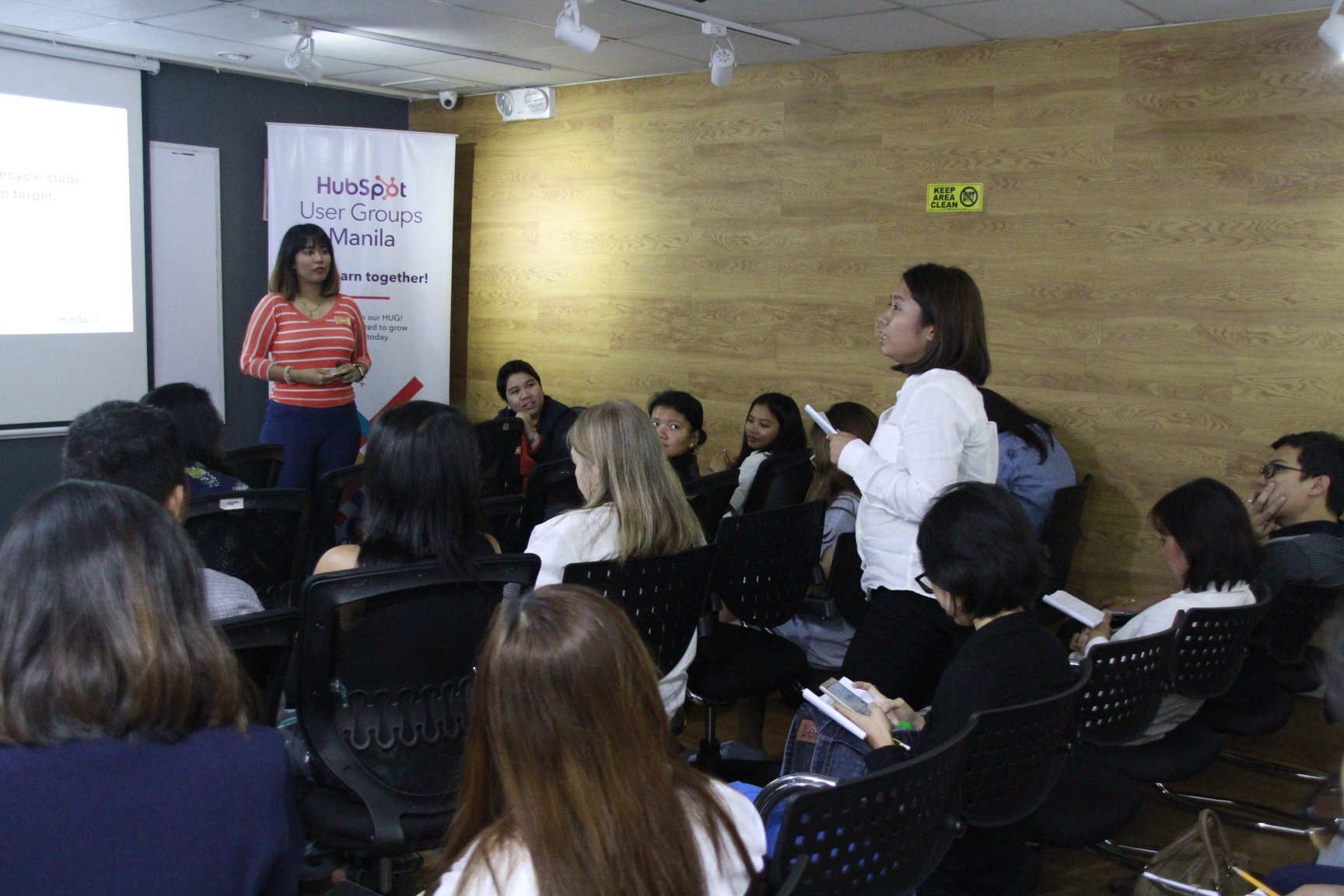
StraightArrow Senior Inbound Marketing Specialist, Jade Albert, listens to a participant as she shares her answers on the lead nurturing activity. Photo by Mark Alarcon.
To help attendees further understand this concept, Jade provided a short but challenging exercise. This includes the first step to lead nurturing: determining the persona and lifecycle stage of the contacts the marketers want to target.
To do this, participants had to answer 3 questions:
- Do you have a clear sense of what you want your contacts to accomplish and to take action on in this workflow? What is the desired outcome/goal you would like your users to achieve/complete at the end? How will you know if your workflow is successful or not?
- What kind of users do you want to target? What are the criteria for them to be enrolled in this workflow?
- What actions are going to start that process to complete your goal?
In addition to the exercise, another pair of StraightArrow Inbound Marketing Specialists, Seong Cheon Lee and Andeng Pelingo, took the floor to share their experience in supporting clients by managing their workflows and leading nurturing strategies.
The pair gave practical tips on fixed-date workflows which are used when sending out messages for an event.
An example is a workflow that includes distributing invitation, confirmation, and reminder emails.
Aside from these, Seong and Andeng also provided ideas on using automation software when assigning sales team members and account managers to a specific contact.
After the insightful sessions, the gathering came to a close. GetCre8ive’s Chief Advocate Sarah Medilo encouraged the attendees—the now official HUG Manila members—to continue their journey in learning more about HubSpot, marketing automation, and of course, how to delight clients.
This is what HUG Manila is all about:
Helping HubSpot practitioners, inbound advocates, and marketing professionals learn how to do marketing and sales in an unintrusive and helpful manner—a way that delights and embraces the customers first.
Want to boost your lead nurturing efforts with our certified specialists?
Explore our creative and digital marketing packages today. Let’s engage with your contacts, build relationships, and turn them into returning customers.
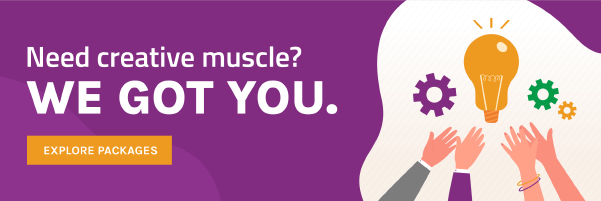










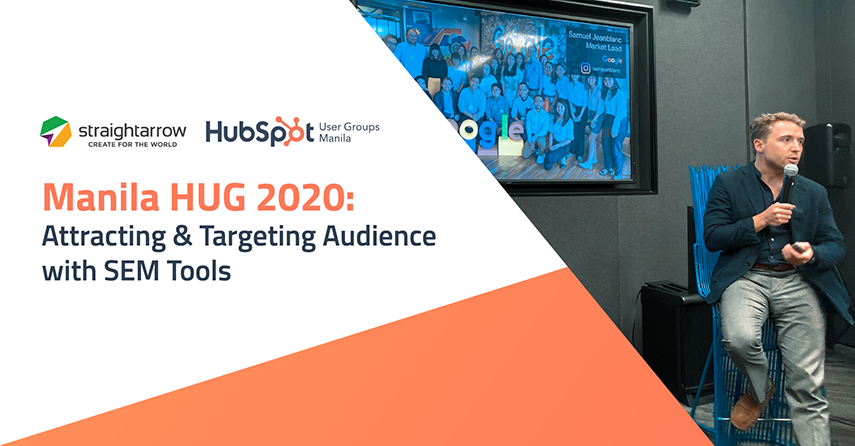

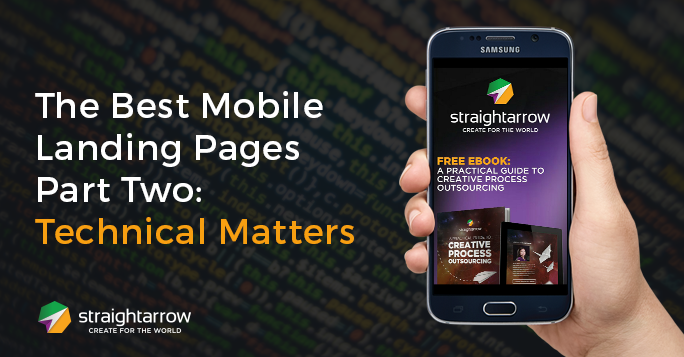

Comments